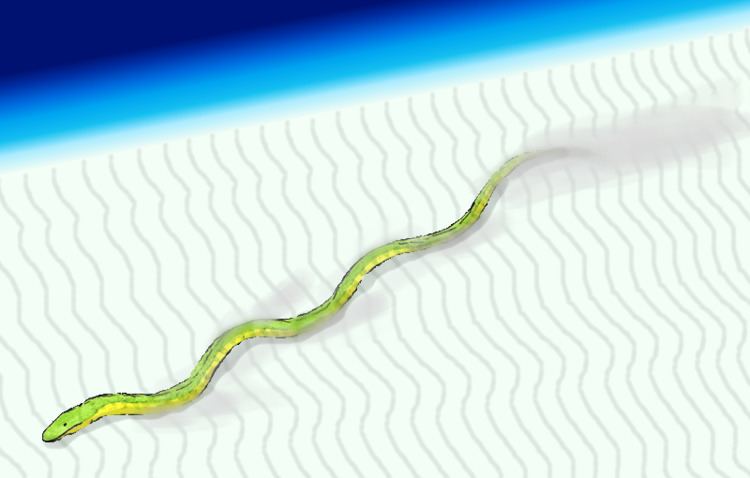Scientific name Gigantophis garstini Higher classification Gigantophis Order Scaled reptiles | Suborder Serpentes Genus †Gigantophis Phylum Chordata Rank Species | |
 | ||
Similar Snake, Titanoboa, Madtsoiidae, Madtsoia, Reptile | ||
Gigantophis part 2
Gigantophis garstini is an extinct, giant snake which may have measured more than 10 m (32.8 ft), larger than any living species of snake. Before the Paleocene constrictor genus Titanoboa was described from Colombia in 2009, Gigantophis was regarded as the largest snake ever. Gigantophis lived about 40 million years ago in the northern Sahara, where Egypt and Algeria are now located.
Contents

Gigantophis part 1
Discovery
The species is known only from a small number of fossils, mostly vertebrae.

Its discovery was published in 1901 by paleontologist Charles William Andrews, who described it, estimated its length to be about 30 feet, and named it "garstini" in honor of Sir William Garstin, KCMG, the Under Secretary of State for Public Works in Egypt.
Taxonomy
Gigantophis is classified as a member of the extinct family Madtsoiidae.
Size

Jason Head, of the Smithsonian Institution in Washington, DC, has compared fossil Gigantophis vertebrae to those of the largest modern snakes, and concluded that the extinct snake could grow from 9.3 to 10.7 m (30.5 to 35.1 ft) in length. If 10.7 m (35.1 ft), it would have been more than 10% longer than its largest living relatives. This species was once thought to be the largest species of snake in Earth's history, but was later replaced by Titanoboa.
